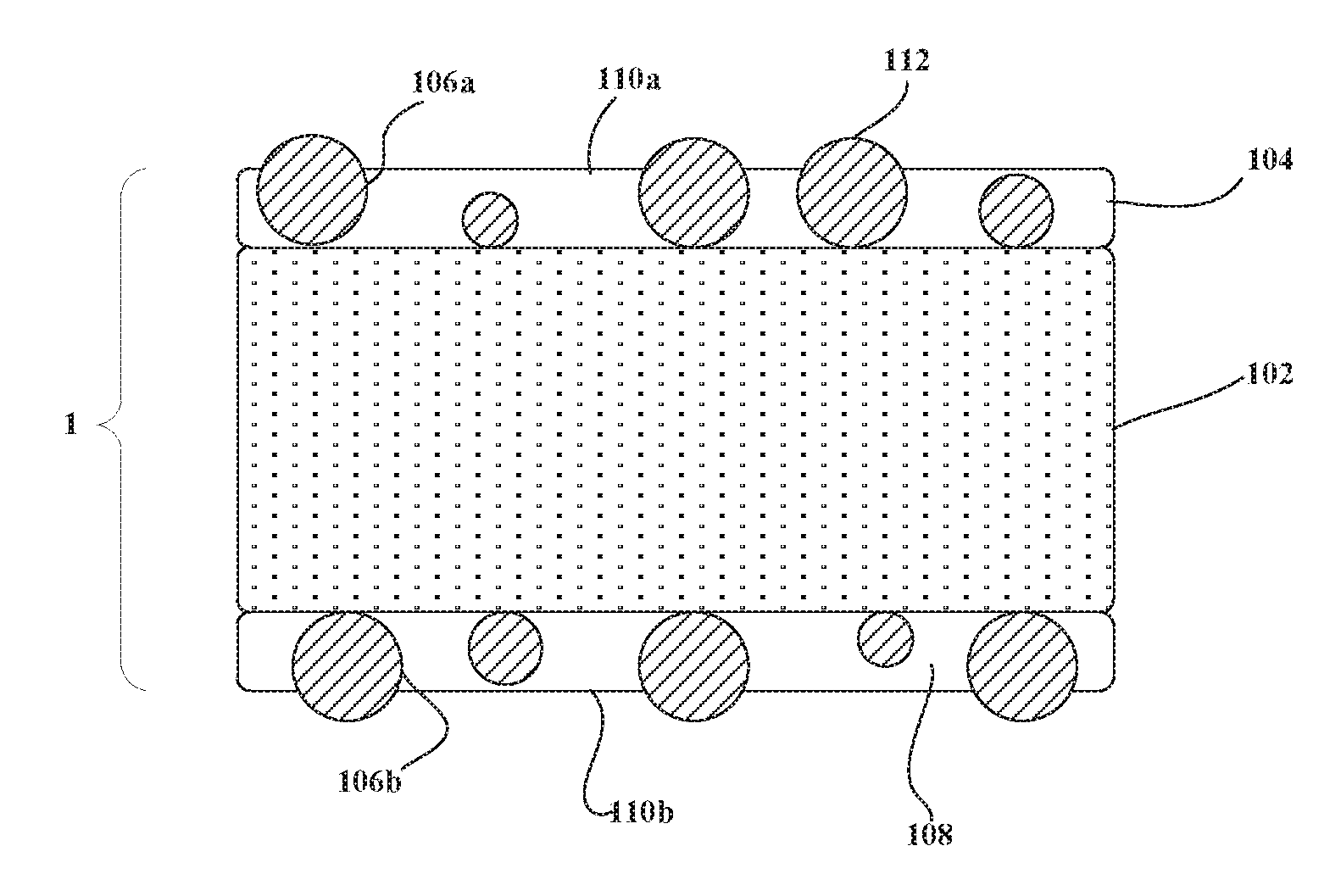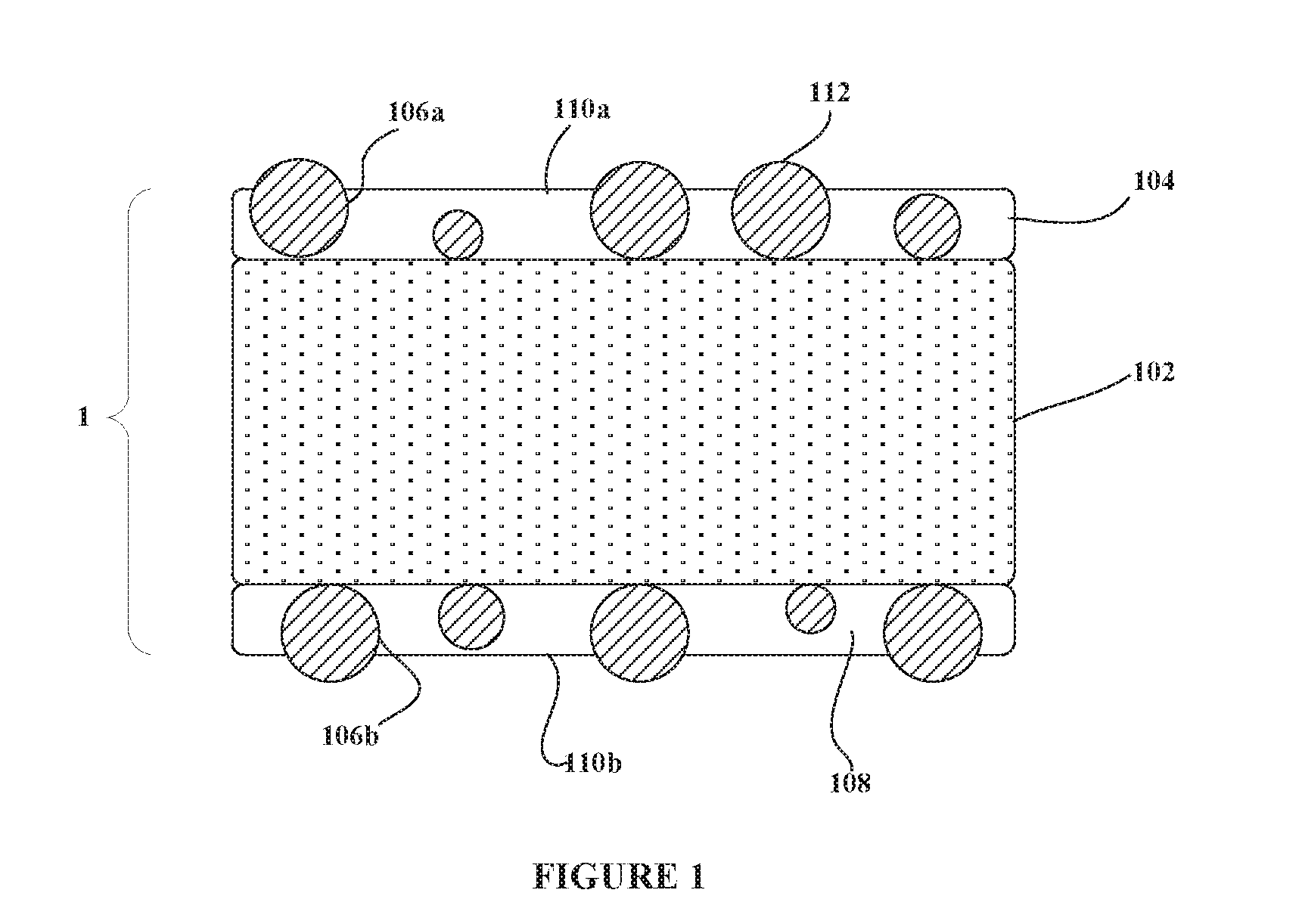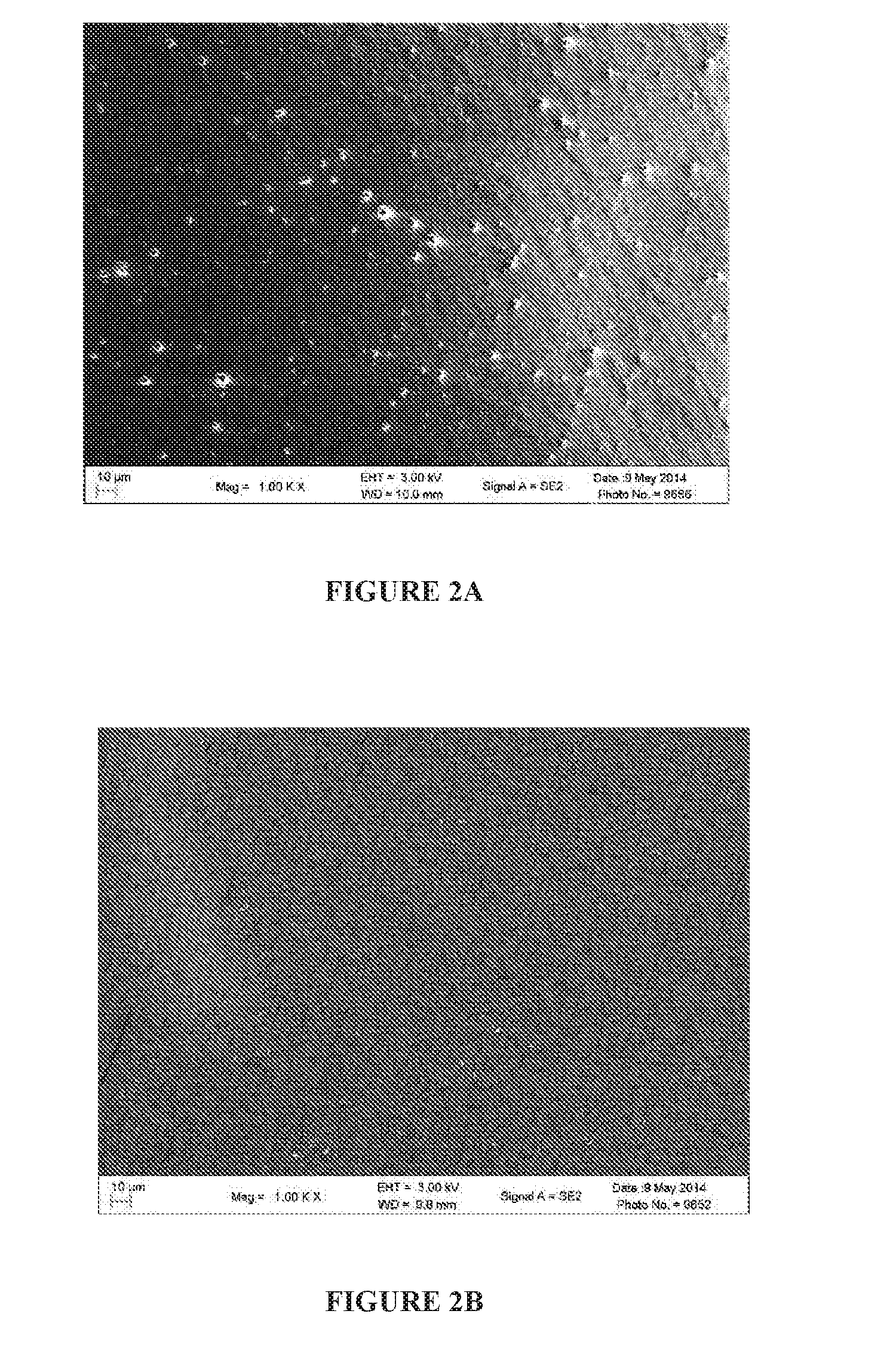Monolithic Breathable Film and Composite Manufactured Therefrom
a monolithic, breathable technology, applied in the direction of synthetic resin layered products, textiles and paper, etc., can solve the problems of affecting the barrier properties of such microporous films, microporous films may suffer from a loss of drapability, and limited utility of microporous films
- Summary
- Abstract
- Description
- Claims
- Application Information
AI Technical Summary
Benefits of technology
Problems solved by technology
Method used
Image
Examples
example 1
[0092]In Example 1, a film extrusion system capable of producing an ABA co-extruded film was used where a molten film was cast on top of a polypropylene spunbond while it traveled in contact with the chill roll. The film after cooling was subsequently peeled from the carrier web before measurement. For all of the samples from this experiment the die gap was 0.4 mm.
[0093]For the A to G samples the core layer represented about 85% by weight of the film and was made from 100% Arnitel ® VT3108. For samples A to G the two skin layers were assumed to be about the same thickness, and their added weight represented about 15% by weight of the film. For samples A and B the skin layers were made from Arnitel® M400. Both Arnitel® resins are available from DSM Engineering Plastics, P.O. Box 43, 6130 AA Sittard, The Netherlands. For sample C the skin composition was a 14 to 1 blend of Arnitel® M400 and a masterbatch SCC-77941 sold by Standridge Color Corporation, 1196 Hightower Trail, Social Circ...
example 2
[0094]In Example 2, the samples were produced in a similar way as Example 1 with the exception that they were cast directly on the chill roll without the need for a nonwoven carrier web. For all of the samples from this example the die gap was set at 0.4 mm. For all of the samples from this example the weight ratio between the core layer and the skin layers was again about 85:15. For all of the samples from this example the core layer was made with Arnitel® VT3108. For samples H, J, K, and L the formulation of the skin layers comprised Arnitel® EM400 and SCC-77941 masterbatch blended at respective ratios of 6:4, 1:1, 3:7 and 3:7.
TABLE 2BasisThick-COFSampleweightnessHHPinholeMVTRkineticIDg / m2μmmBar# / 2 m2g / m2 / dayto steelH13.311174012400.38J12.513>200012100.41K151716906350.57L13.11518206050.54
example 3
[0095]In Example 3, the film samples were produced in a similar way as Example 2. The die gap for all of the samples from this example was 0.4 mm. For all of the samples from this example the weight ratio between the core layer and the skin layers was again about 85:15. For all of the samples from this example the core was made with Arnitel® VT3108. For samples M and N the formulation for the skin layers of the film comprised Arnitel® VT3108 and a SCC-77941 masterbatch blended respectively at ratios of 9:1 and 1:1.
TABLE 3BasisThick-COFSampleweightnessHHPinholeMVTRkineticIDg / m2μmmBar# / 2 m2g / m2 / dayto steelM11.29167013000.4N12.21873013300.36
PUM
| Property | Measurement | Unit |
|---|---|---|
| thickness | aaaaa | aaaaa |
| diameters | aaaaa | aaaaa |
| diameters | aaaaa | aaaaa |
Abstract
Description
Claims
Application Information
 Login to View More
Login to View More - R&D
- Intellectual Property
- Life Sciences
- Materials
- Tech Scout
- Unparalleled Data Quality
- Higher Quality Content
- 60% Fewer Hallucinations
Browse by: Latest US Patents, China's latest patents, Technical Efficacy Thesaurus, Application Domain, Technology Topic, Popular Technical Reports.
© 2025 PatSnap. All rights reserved.Legal|Privacy policy|Modern Slavery Act Transparency Statement|Sitemap|About US| Contact US: help@patsnap.com



